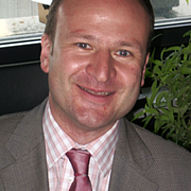
Research at the Pharmaceutical Biology department
Discovery of biologicaly active compounds of natural origin in herbs and their pharmacological characterization
Historically in pharmacognosy there is a special part, called "The chemistry of compounds of natural origin", which is a descriptive subfield of biochemistry with isolation, structure elucidation, synthesis, as well as with the study of chemical properties of biogenic substances. These originate mainly the secondary-, in a broad sense also the primary metabolism of animals, plants and microorganisms.
Analytical aspects of medicinal plants research
A second area of research lies in development of analytical methods (in particular based on TLC, HPTLC and HPLC method) at all levels of production and quality assurance of herbal medicines.
The unique position of herbal medicines results from their obtaining, their complex composition, and the associated problems of proof of efficacy and the analysis. To ensure the quality of herbal medicines, standardization is checked at all stages of production. This begins with the cultivation and extraction of the drug and leads to the finished extract, with the target to engage a defined standard (so called "Standardisation"). This begins with the cultivation and extraction of the drug and leads to the finished extract, with the target to engage a defined standard (so called "Standardisation"). In order to secure the quality at a high level, a considerably larger analytical effort is required, than with chemically-defined individual substances, while medicines which contain herbal preparations (= Phytopharmaka) are by definition multicomponent mixtures and are composed not only of active compounds, but also in a multiform matrix embedded by accompanying substances. In this context, two aspects may be highlighted for example: falsification of medicinal drugs and the stability testing of herbal medicines.
Before a herbal medicine may result, the identity as well as the purity of the drug material must be clearly defined. Occurring distortions may either contain toxic substances, or reduce the quality of the drug because of the lack of effective ingredients. Important and until today irreplaceable methods of quality control are in this field: microscopy (using appropriate dyes) and thin layer chromatography (TLC, using appropriate spray reagents). When talking about TLC, the HPTLC method (High Performance Thin Layer Chromatography) has been used widely in recent years. Stability studies of herbal medicines include quantitative and qualitative studies of active principles compounds as well as the accompanying substances. Despite the manifold chromatography-spectroscopic methods are here the HPLC (High Performance Liquid Chromatography), the most important and also combined with various detection methods (DAD, MS) and stationary phases also generally remained the most powerful method of analysis. With a suitable method development precise quantitative determinations may be realized as well as the qualitative analysis of the fingerprints of an herbal preparation.
Contact: Prof. Dr. em. Gerhard Franz, Prof. Dr. Jörg Heilmann
Pharmaceutical Biology
Room CH 14.2.82
Tel.: 0941-943-4761
Fax: 0941-943-4990
Email



